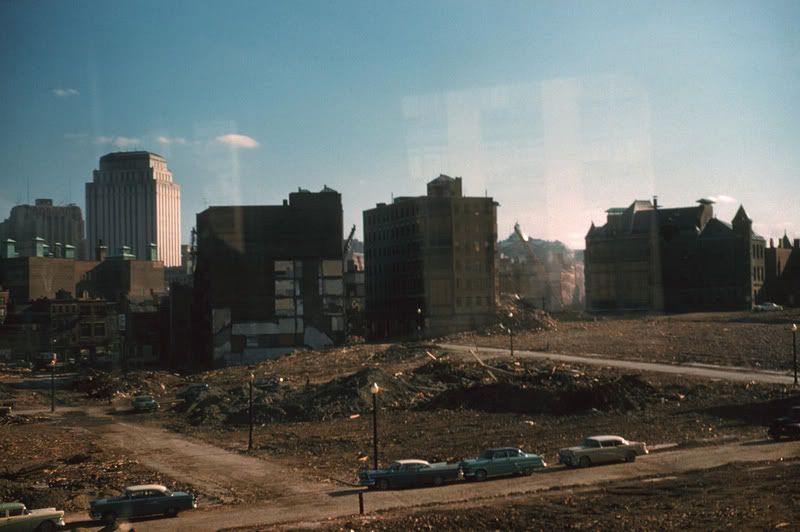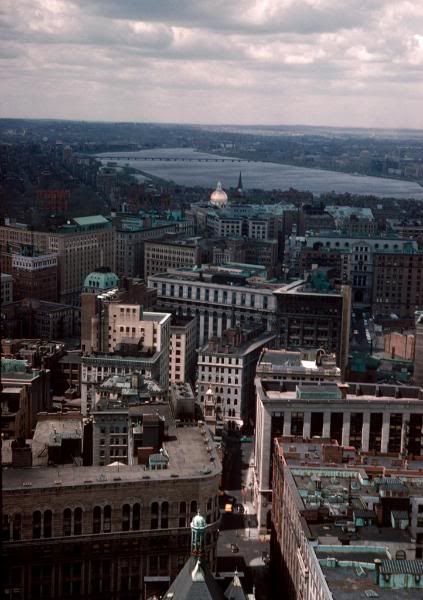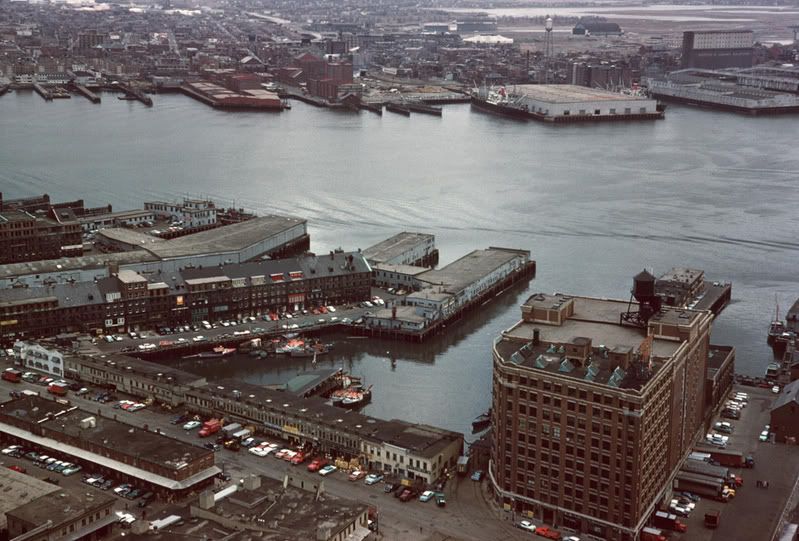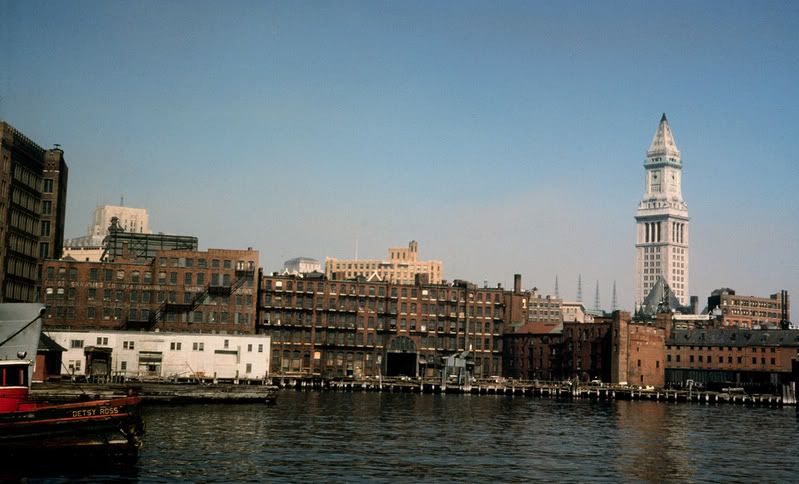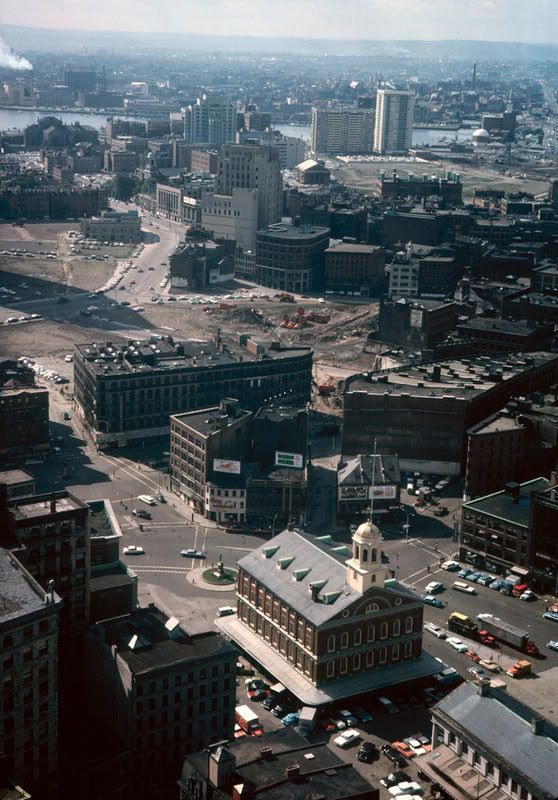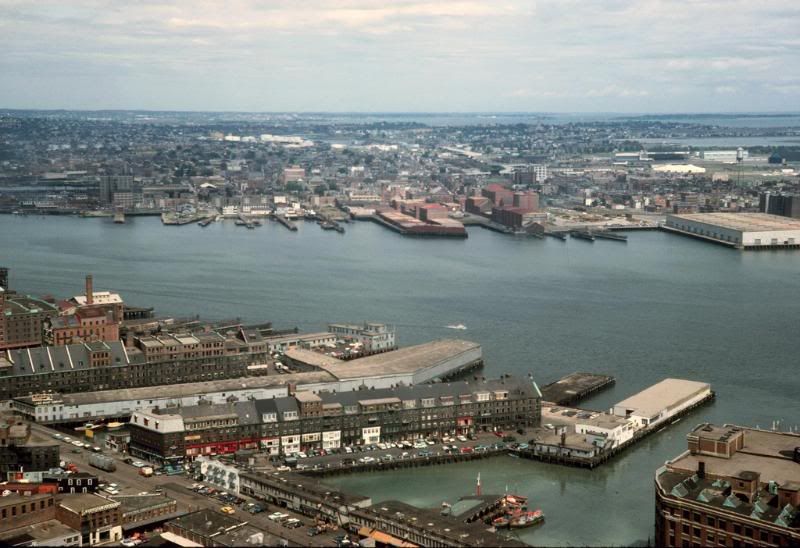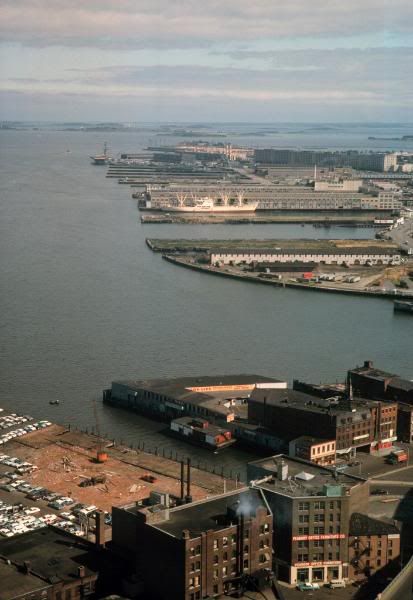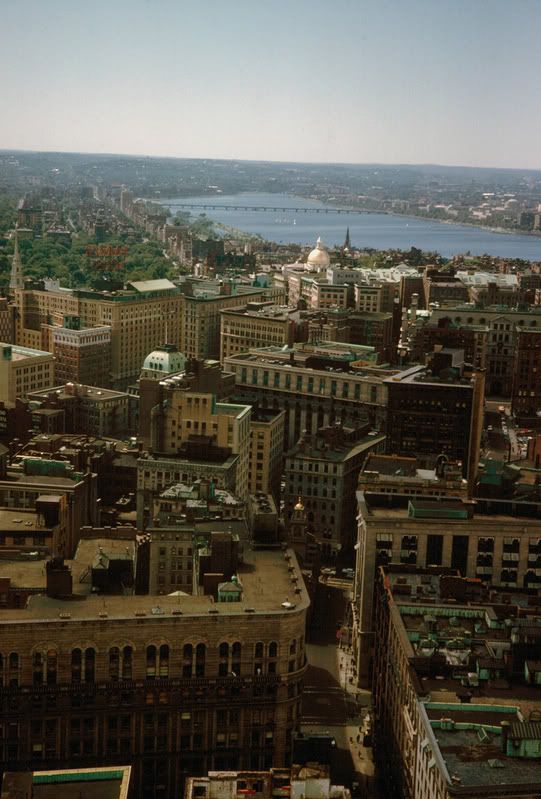Can someone explain what is going on in this pic? Why does it look like a war zone?
You are using an out of date browser. It may not display this or other websites correctly.
You should upgrade or use an alternative browser.
You should upgrade or use an alternative browser.
Flickr Finds & Social Media Pics
- Thread starter kz1000ps
- Start date
Last edited:
Ron Newman
Senior Member
- Joined
- May 30, 2006
- Messages
- 8,395
- Reaction score
- 13
What is the rightmost building in picture #3 above? Was it replaced by the Marriott Long Wharf hotel?
The large empty space in the left background of the 1962 photo is the former Scollay Square, future Government Center.
The large empty space in the left background of the 1962 photo is the former Scollay Square, future Government Center.
underground
Senior Member
- Joined
- Jun 20, 2007
- Messages
- 2,390
- Reaction score
- 3
What is the rightmost building in picture #3 above? Was it replaced by the Marriott Long Wharf hotel?
Unless there was some intermediary building I think it's gotta be because that's the little cove at CC Park.
czsz
Senior Member
- Joined
- Jan 12, 2007
- Messages
- 6,043
- Reaction score
- 7
Wow, look at all the little streets/blocks once wedged between Faneuil Hall and Government Center...amazing what disappeared under the widening and realignment of Congress Street alone.
One of the things that strikes me about these photos is the degree to which the city has changed over the course of even half a lifetime.
One of the things that strikes me about these photos is the degree to which the city has changed over the course of even half a lifetime.
Wow, look at all the little streets/blocks once wedged between Faneuil Hall and Government Center....
Right behind Faneuil Hall is Dock Square right? and behind that-the cleared space- was Scollay Sq? It's a shame none of this is around anymore; however, the first of Mike's photos reminds me of something Dickens would write about.
Fascinating stuff.
*EDIT*
Found this on google:

Anyone know why the tower that's pictured in the middle of the Thomas O'Neill Building wasn't built?
also, one more that I think I've seen here, but I can't seem to find it again:

Last edited:
Beton Brut
Senior Member
- Joined
- May 25, 2006
- Messages
- 4,382
- Reaction score
- 338
Anyone know why the tower that's pictured in the middle of the Thomas O'Neill Building wasn't built?
That's actually the Hurley Building, by Paul Rudolph. The state cheeped (or chickened) out on building the tower. A real loss to those of us who dig the building.
The Tip O'Neil Building is steps away on Causeway Street. Designed by Hugh Stubbins, it's a toothless interpretation of Rudolph's massing and articulation; a forgettable building by a good architect. Nice catch on recognizing the similarity.
Ron Newman
Senior Member
- Joined
- May 30, 2006
- Messages
- 8,395
- Reaction score
- 13
Another building in the model that was never built was a counterpart to Center Plaza, along Congress Street north of Faneuil Hall. The Curley statue park and the Holocaust Memorial are there now instead.
Padre Mike
Active Member
- Joined
- Jan 27, 2007
- Messages
- 681
- Reaction score
- 1
Wow, Lrfox, that last photo is amazing. I wonder what year it was taken....it's got to be before WWII; the Bulfinch Triangle and West End are intact; Haymarket train station was still active (c.f. Canal St. tracks); there was no expressway...I wish I could go back in time just for a few days!
Charlie_mta
Senior Member
- Joined
- Jul 15, 2006
- Messages
- 4,553
- Reaction score
- 6,471
"Urban Renewal had its excesses .."
Yeah, just like the leveling of 1945 Dresden Germany had its excesses.
Seriously, that's what these photos of vast urban renewal demolition appear to be. The only consolation is that these wastelands may eventually be infilled and reborn as dense, vibrant urban neighborhoods. It will take time though, especially with buffoons like Menino at the helm.
Yeah, just like the leveling of 1945 Dresden Germany had its excesses.
Seriously, that's what these photos of vast urban renewal demolition appear to be. The only consolation is that these wastelands may eventually be infilled and reborn as dense, vibrant urban neighborhoods. It will take time though, especially with buffoons like Menino at the helm.
statler
Senior Member
- Joined
- May 25, 2006
- Messages
- 7,938
- Reaction score
- 543
Complaining about how gentrified the West End is, or about the Disneyfication of Scollay Square.
I'll take that over what we have now.
tobyjug
Senior Member
- Joined
- Jul 21, 2007
- Messages
- 3,408
- Reaction score
- 473
Thank you for posting those photos. Boston of my childhood.
The effect of "urban renewal, 60's style" as a positive contributor to the revival of the city is overrated. (When I got out of college in those days I was told to move to Houston if I wanted to find a job. I moved to Europe instead.) Rather, the excesses of urban renewal gave people a heightened appreciation of the city's "good bones". The Gans book helped, but the watershed moment was the rejection of Logue's proposal to allow the construction of a high rise on every corner in the Back Bay grid.
Boston really started to pick up in the 80's when an influx of people from outside this region gave the place a charge it lacked.
The effect of "urban renewal, 60's style" as a positive contributor to the revival of the city is overrated. (When I got out of college in those days I was told to move to Houston if I wanted to find a job. I moved to Europe instead.) Rather, the excesses of urban renewal gave people a heightened appreciation of the city's "good bones". The Gans book helped, but the watershed moment was the rejection of Logue's proposal to allow the construction of a high rise on every corner in the Back Bay grid.
Boston really started to pick up in the 80's when an influx of people from outside this region gave the place a charge it lacked.
underground
Senior Member
- Joined
- Jun 20, 2007
- Messages
- 2,390
- Reaction score
- 3
Was the rebirth of the city during the 80's a function of a changing city scape or was it a function of a changing economy? I'm going with economy. Oh, and Kevin White.
Scott
Senior Member
- Joined
- May 25, 2006
- Messages
- 1,150
- Reaction score
- 635
People back then could not predict the future and we in the future only see one outcome out of a trillion possibilities. I like Boston as it is because it is a hybrid of New York and Los Angeles with alot better foliage around it and a really good antique collection.
Would we be talking about how trendy the West End has become or warning what few tourist that come to Detroit East not to go there at night? Would Boston be a modern American city or a blighted relic? People where chopping off the top stories of some of the buildings in these photographs so they didn't have to pay the taxes.
I suggest that without Urban Renewal the wealthy city you see today (which may not please architectural buffs like myself so much as before) would not be possible. That it is a healthier and less polluted city. Still needs a ton of work but it has a future.
Feel free to profess mock outrage at these ramblings...
Would we be talking about how trendy the West End has become or warning what few tourist that come to Detroit East not to go there at night? Would Boston be a modern American city or a blighted relic? People where chopping off the top stories of some of the buildings in these photographs so they didn't have to pay the taxes.
I suggest that without Urban Renewal the wealthy city you see today (which may not please architectural buffs like myself so much as before) would not be possible. That it is a healthier and less polluted city. Still needs a ton of work but it has a future.
Feel free to profess mock outrage at these ramblings...
TomOfBoston
Senior Member
- Joined
- Mar 29, 2007
- Messages
- 1,241
- Reaction score
- 465
People back then could not predict the future and we in the future only see one outcome out of a trillion possibilities. I like Boston as it is because it is a hybrid of New York and Los Angeles with alot better foliage around it and a really good antique collection.
Would we be talking about how trendy the West End has become or warning what few tourist that come to Detroit East not to go there at night? Would Boston be a modern American city or a blighted relic? People where chopping off the top stories of some of the buildings in these photographs so they didn't have to pay the taxes.
I suggest that without Urban Renewal the wealthy city you see today (which may not please architectural buffs like myself so much as before) would not be possible. That it is a healthier and less polluted city. Still needs a ton of work but it has a future.
Feel free to profess mock outrage at these ramblings...
The Boston of my childhood (50's and 60's) was a backwater. Someone once called it "a once great metropolis slowly sinking into ruin, a city with a fabled past, a decaying present and no future". They were wrong of course, thank God. Whatever got Boston to where it is today, we should be grateful for. If 60's urban renewal and Ed Logue were part of it, so be it.
czsz
Senior Member
- Joined
- Jan 12, 2007
- Messages
- 6,043
- Reaction score
- 7
The cityscape of the pre-1960s Shawmut peninsula was too unique not to have been discovered and colonised by gentrifying forces attracted by the shift in fashion and taste back toward the raw and urban. The warren of streets that once radiated from Scollay Square was a commodity that hardly resembled Detroit, either structurally or aesthetically; it would have been in demand. Assuming urban renewal was the sole engine of Boston's newfound economic prosperity after midcentury, the city would have still been poorer than it is today, but it would still probably be bursting with life.
But urban renewal wasn't the sole or even most important engine of this success, anyway. The rise of the service economy and of research and development benefitted a city with a surfeit of educational institutions immensely. Cultural institutions also managed to exert a staying power on patrons - if you're a mutual fund tycoon with a knack for art or music, it would have been easier to stay in Boston than to rebuild one's entire repertoire of habits in Phoenix or Atlanta.
But urban renewal wasn't the sole or even most important engine of this success, anyway. The rise of the service economy and of research and development benefitted a city with a surfeit of educational institutions immensely. Cultural institutions also managed to exert a staying power on patrons - if you're a mutual fund tycoon with a knack for art or music, it would have been easier to stay in Boston than to rebuild one's entire repertoire of habits in Phoenix or Atlanta.

